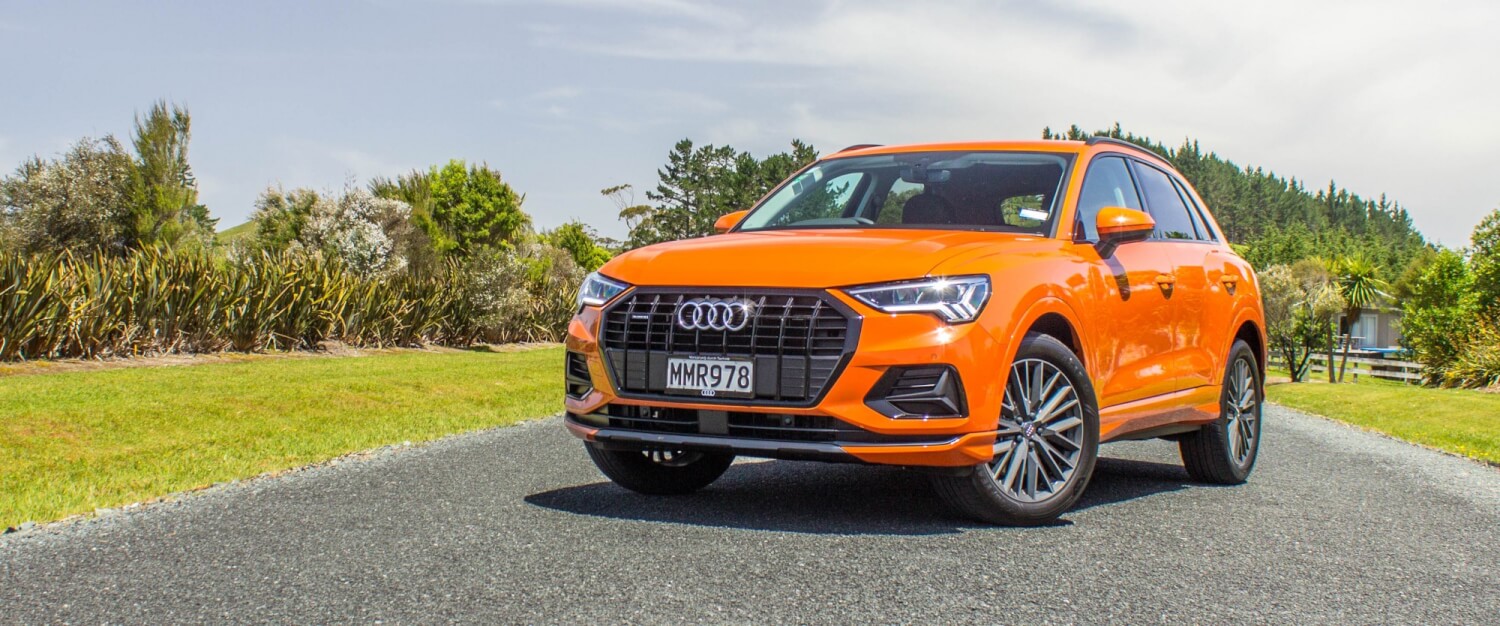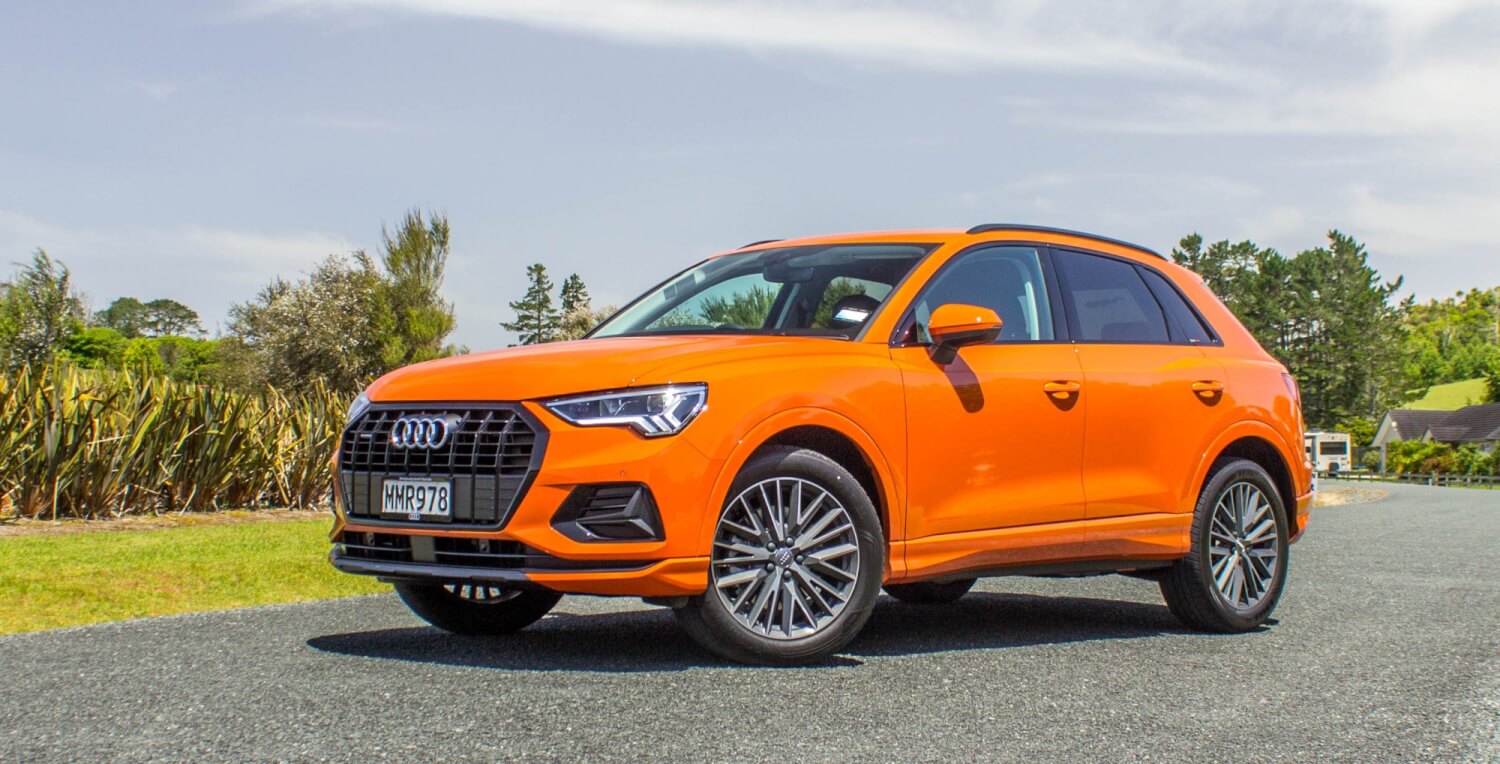I’m not sure how many times we’ve said it, but it’s a lot; there are some tough market segments out there. It’s very much the same for the luxury, compact SUV segment; lots of players and lots of juicy choices, all vying for a slice of a relatively small market. Audi has done well in the past with the Q3, as it’s been a popular choice amount buyer in this segment. It’s got the look and drives well.
Can Audi keep loyal buyers away from other brands, and into the next gen Q3? We headed to Auckland to find out.
First up was a catch up with Dean Sheed, General Manager of Audi in New Zealand, for an update on all things Audi. He went on to confirm that yes, the e-tron is sold out, but they are taking orders for February delivery. There’s a whole range of new Audi EVs coming out, and by the end of this month, all Audi dealerships in New Zealand will have a 50 kilo-watt (kW) EV charger installed, with three dealers having 175kW chargers.
The e-tron can take a max charge of 150kW, while most current EVs can only take 50kW max charge, he says. A new model to arrive, the e-tron GT, will be able to accept a humongous 350kW charge into its batteries. That’s incredible, by any standards.
On the petrol-powered front, the RSQ8 packing a huge 412kW will be in New Zealand next year, with “2020 being the year of EVs and Audi sport performance models” says Dean.
With that, it was time to do the first leg of today’s drive.
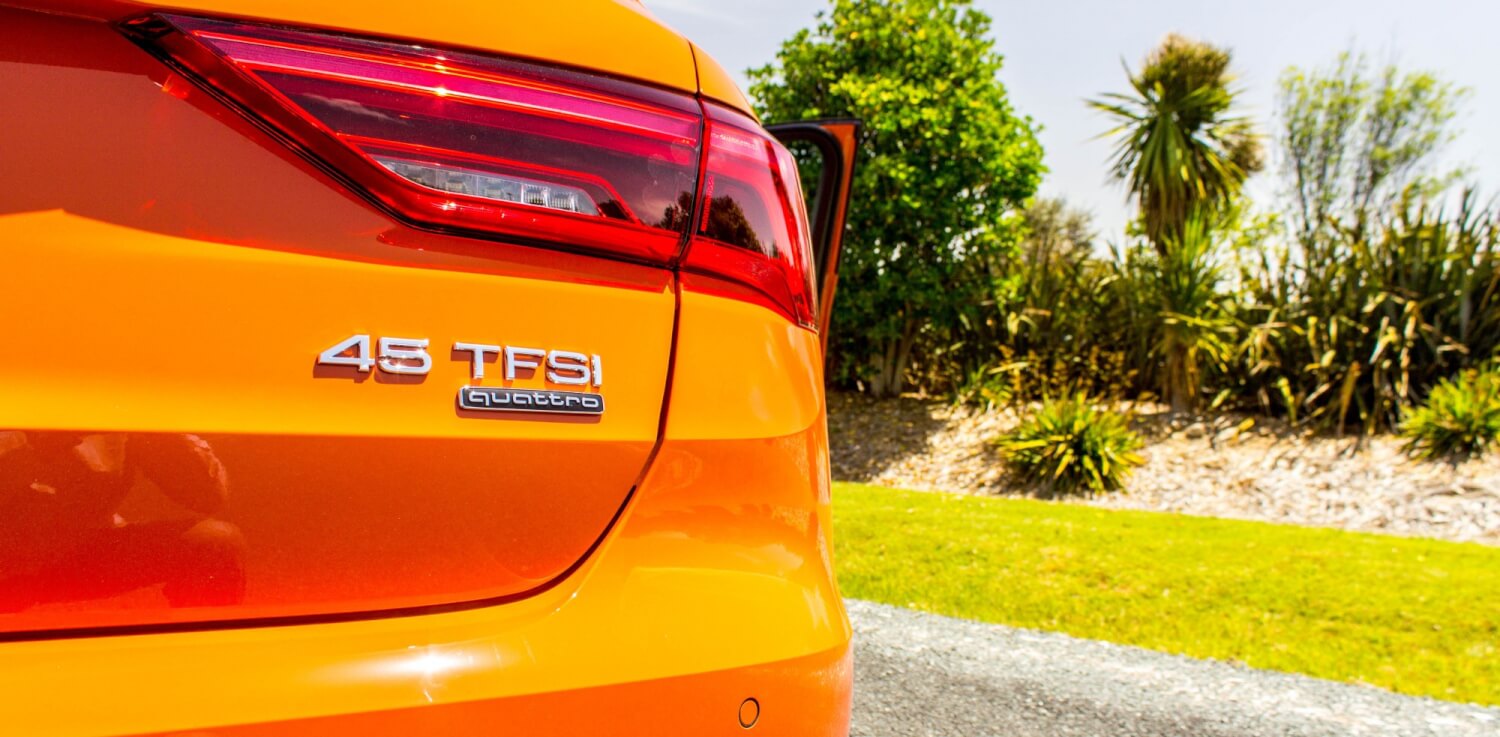
FIRST DRIVE
We grabbed a base-model 35 TSFI finished in white, which has the 1.4-litre, 4-cylinder turbo petrol motor. You can see just how much bigger this car looks than the previous model. Audi says it’s “all grown up”, and it sure looks that way. Higher, longer, wider. It looks so much wider, with those UR quattro-inspired blistered guards.
I got in as passenger, to check out the interior. It’s been improved no end. There was nothing wrong with the previous gen car, but this one looks a lot more modern, and airy. Our drive car was fitted with a panoramic sunroof, which made the interior look bigger. But it also feels bigger, with more shoulder room, and a good amount of leg room front and rear. There’s quite a bit of piano black up front, and as you’d expect, everything looks beautifully finished.
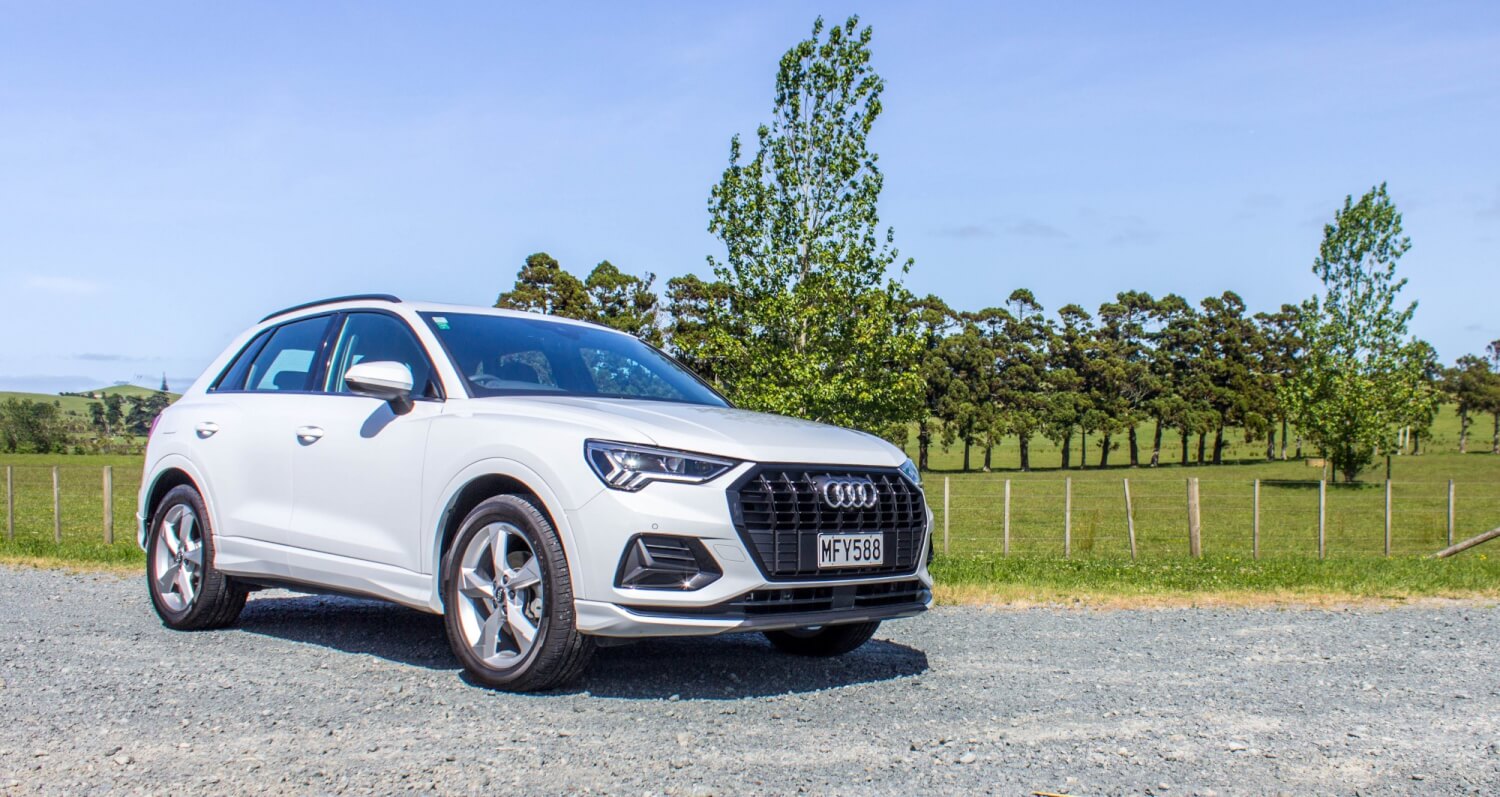
From the passenger’s seat, that little 1.4 turbo sounds eager, and sporty. After a run of Japanese and Korean four-cylinder motors, it was nice to hear a little rasp to the engine note when it goes over 3,000rpm.
We headed north of Auckland, towards Helensville and Warkworth, with a destination of Te Whai Bay Winery, in Mangawhai. Noise was well subdued, with a hint of tyre noise on coarse chip seal, and a small amount of wind noise. On the whole, the Q3 feels extremely refined for an SUV of this size.
One thing was clear; the Q3 was made for the windy backroads we were taking – and I could tell this just from being a passenger. It seems to sit beautifully on the roads we were on.
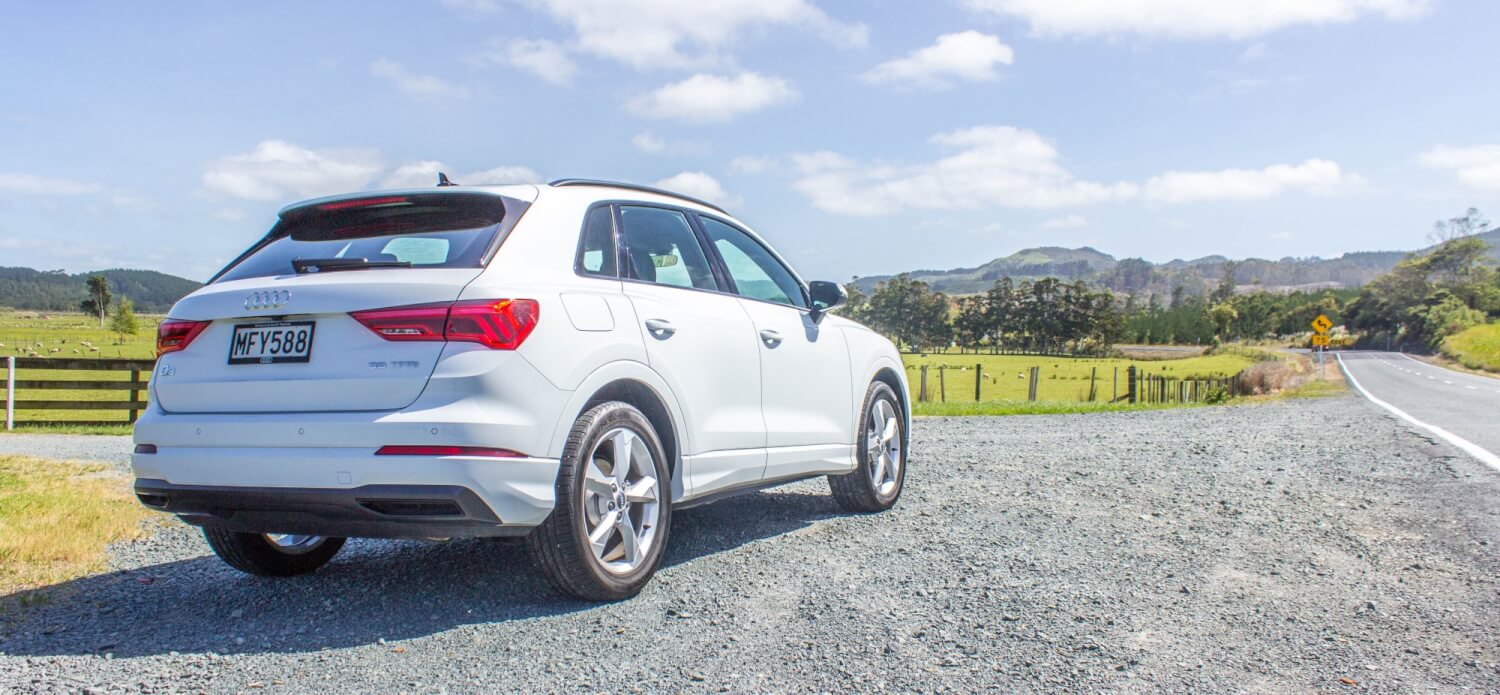
Time for a driver change. The engine can bog down some if you gun it off the mark, but with a few revs, it’s very willing. Basically it’s the 1.4 turbo motor we already know, and love. It sounds fantastic as you wind it out, and smoothness is key.
We moved onto some more twisty roads, with recommended speeds of between 30-55km/h depending on the corner. The Q3 did extremely well, with good levels of grip and a fun factor along with it. It feels like a blast on these sorts of roads, although you need to use the paddles quite a bit to keep the revs up. For a front-wheel drive, it can be chucked around quite nicely.
Soon, we were at our lunch venue – and time for more Audi news, including a breakdown on the Q3, and more updates on Audi in New Zealand.
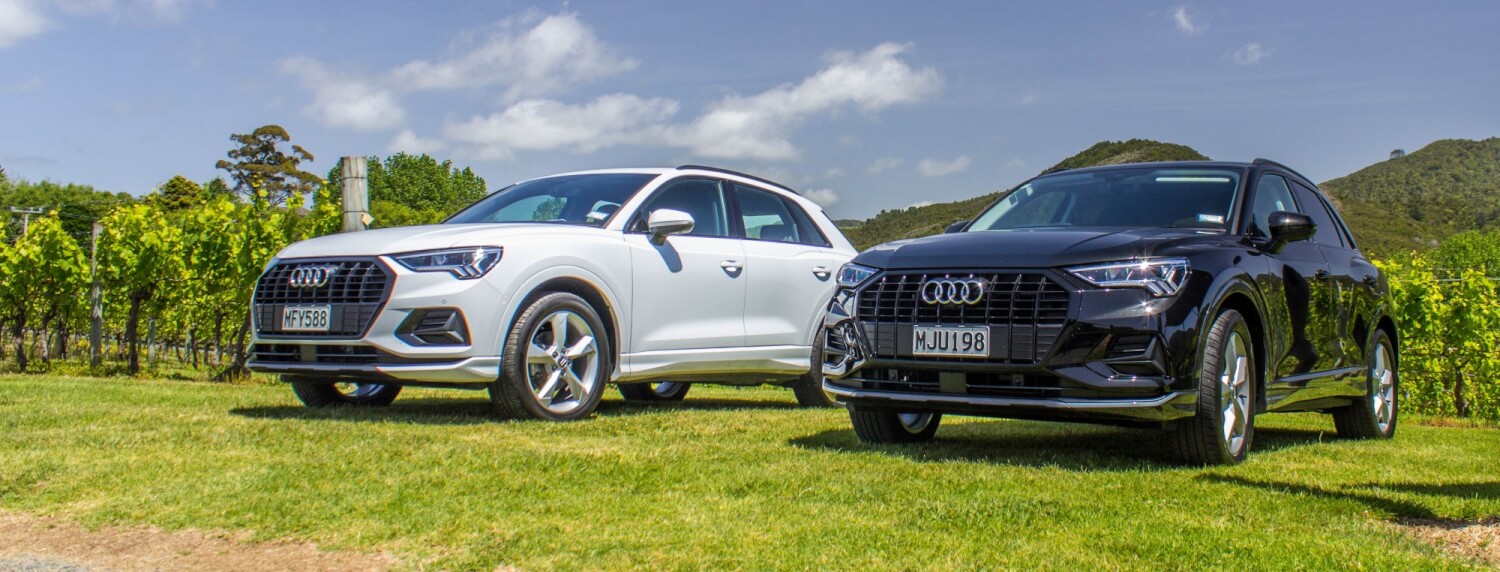
AUDI Q3/AUDI NEW ZEALAND
Overall, it sounds like Audi is in a pretty good place, with October sales up 26% worldwide. In New Zealand, the premium market is up 6.4%, which is promising for brands like Audi. The Q2 is their biggest seller, following closely by the A1. Interestingly, Audi SUV sales in New Zealand are 62% of all Audi sales.
From 2020, there will be a “Product onslaught” says Head of Marketing, Chanelle McDonald, with 27 new models being launched in relatively quick succession.
Among those models will be:
- The diesel-powered SQ8, later in November
- A Q3 Sportback
- The A1 Citycarver (similar to the VW Cross Polo)
- A facelift of the RS4
- The RS6 and RS7 (first quarter 2020)
- A facelift of the RS8
- The A6 Allroad, a turbo-diesel with an electric compressor engine
- The new S8, Audi’s luxury flagship model
- The RSQ8, which – for the first time in 25 of Audi RS models – will be a large SUV with genes of a high performance sports car for the road. This car is due mid-2020.
Chanelle gave us some more detailed info on the e-tron. She reminds us that New Zealand is the first market outside of America and Europe to get the e-tron, and to date they’ve delivered 83 units, so all New Zealand stock is sold.
They are taking orders for February though, and have recently announced the ‘e-tron 50’, that has less battery capacity than the e-tron 55, and is rated with WLTP (world harmonized light-duty vehicles test procedure) at 342Km. It’s slightly cheaper than the e-tron 55, at $134,900.
There’ll also be a new body style, called the e-tron Sportback, in Q3 or Q4 of 2020. There’s an e-tron S coming out in 2020 too, which will be the sporty version, with “neck snapping performance” according to Chanelle. This model will have 2 motors over the rear wheels, for a total of 3 motors for increased grip. It will be available in ‘normal’ and Sportback body styles. It’s expected in Q4 of 2020.
SO WHAT ABOUT THE ALL-NEW Q3?
There’s three models available right now in the Q3 range;
- Q3 35 TFSI Advanced 110kW engine with 18“alloys as standard ($60,900)
- Q3 45 TFSI quattro Advanced 169kW engine with 18“alloys as standard ($74,900)
- Q3 45 TFSI quattro S Line 169kW with 19“alloys as standard ($84,900)
Along with these models, there’s going to be a Q3 Sportback coming Q2 of 2020, and also a Q3 RS in SUV and Sportback body styles.
One of the most obvious differences in the design – other than being bigger – are the blistered guards, just like the original UR quattro. This is a design feature that will flow down to all Audi models.
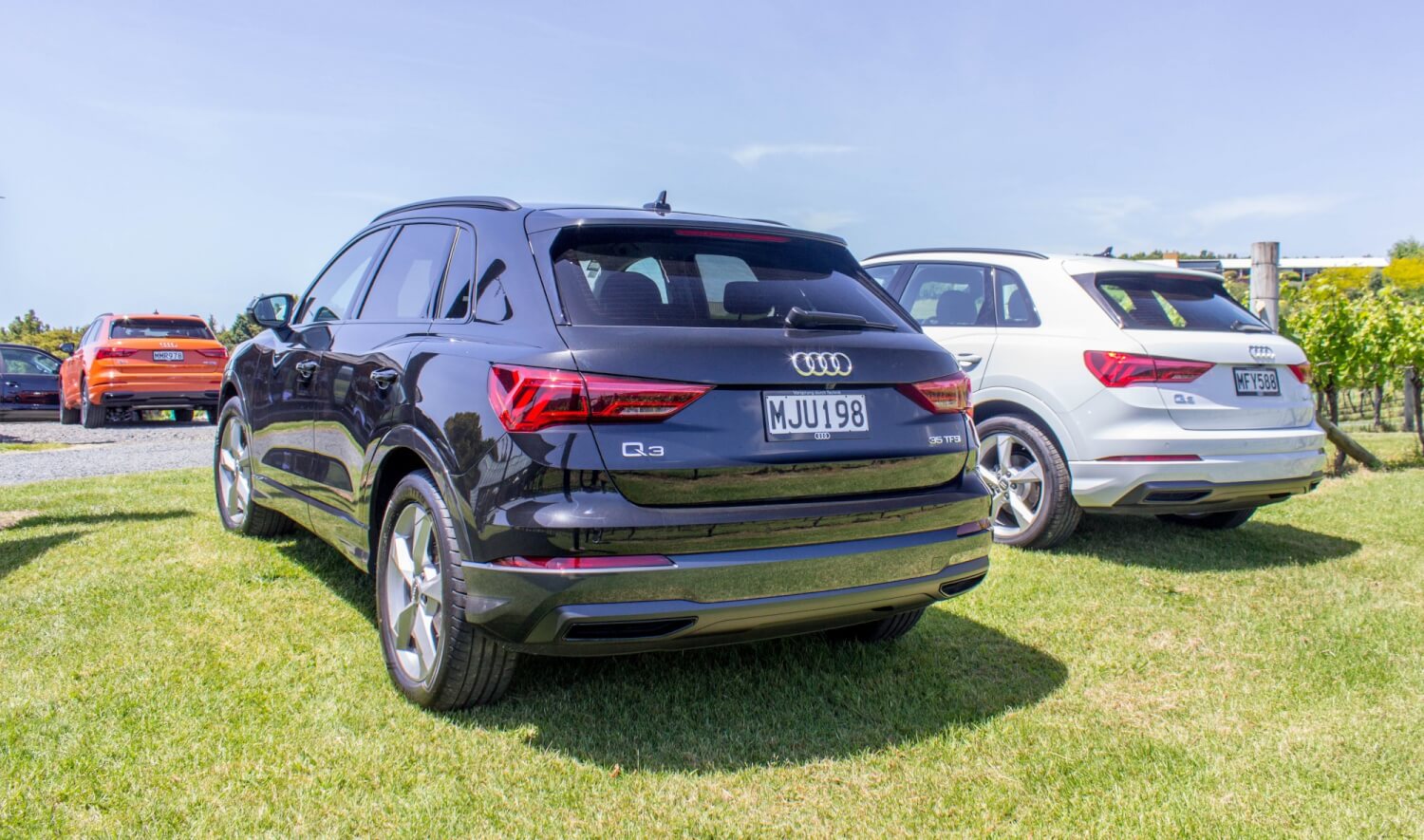
INSIDE
There are synergies with the A6 and Q8, with a premium but clean, modern look. Audi’s MMI touch screen is an addition to the new Q3, and also added is Qi wireless phone charging on all models, and two USB ports in the front – one standard USB, and one for USB-C, to handle those new devices.
The interior and cargo area are larger, and the rear seat can slide up to 150mm – split one third and two thirds independently, to allow for a bigger cargo area, if needed. This equates to 530 litres with the rear seat slid fully back – up 70 litres on the previous model. You can also adjust the angle of the rear seat, which can extend the cargo area to 675 litres. The seats-down total is an excellent 1,525 litres.
There’s a hard parcel tray in the Q3, but it can be stored under the floor, over the space-saver spare – a nice touch.
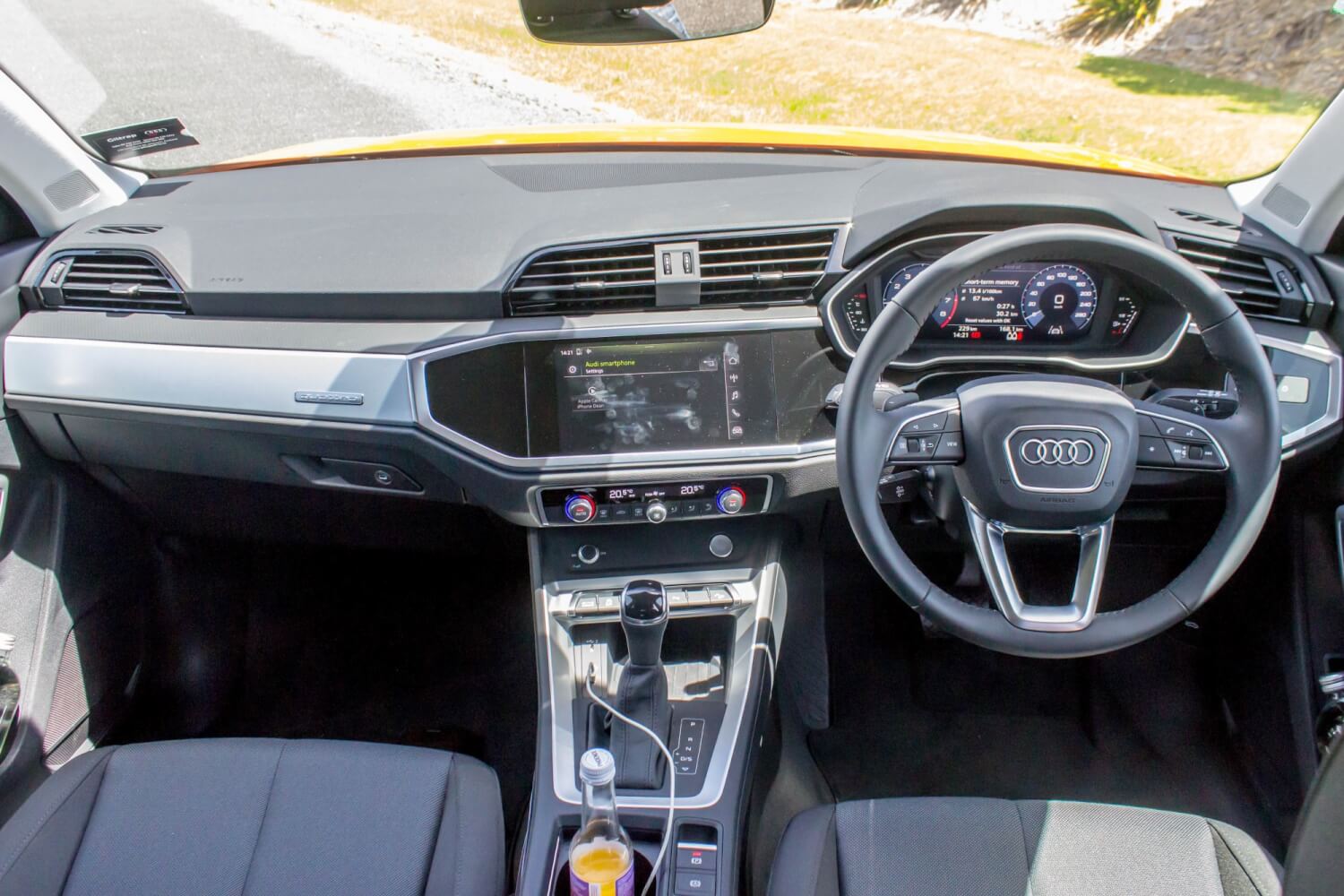
DRIVETRAIN
The base model, the 35 TSFI, comes with a 1.4-litre turbo petrol engine, and outputs 110kW of power and 250Nm of torque. This model will get to 100km/h in 9.2 seconds. Moving up to the 2.0-litre turbo petrol 45 TSFI, power is now up to 169kW and torque an excellent 350Nm. That means 0-100 is now 6.3 seconds.
The base model runs a 7-speed S Tronic automatic transmission, while both 2.0-litre models run an 8-speed S Tronic.
SECOND DRIVE
This time, we’re in the mid-spec 45 TSFI, priced at $80,900 with some extras included. In both 2.0-litre models, there’s the quattro AWD system as standard, along with front and rear parking sensors, an electric park brake with auto hold, Audi Active Lane Assist, auto LED headlights, and lane departure warning. But for me, the 45 TSFI is all about the motor – 169kW (230 horsepower) of 2.0-litre turbo power. Again, I was passenger to start with, as my driver tested out the car on more windy roads. You can feel the extra power in the car, as it launches out of corners with a lot more verve than the 1.4.
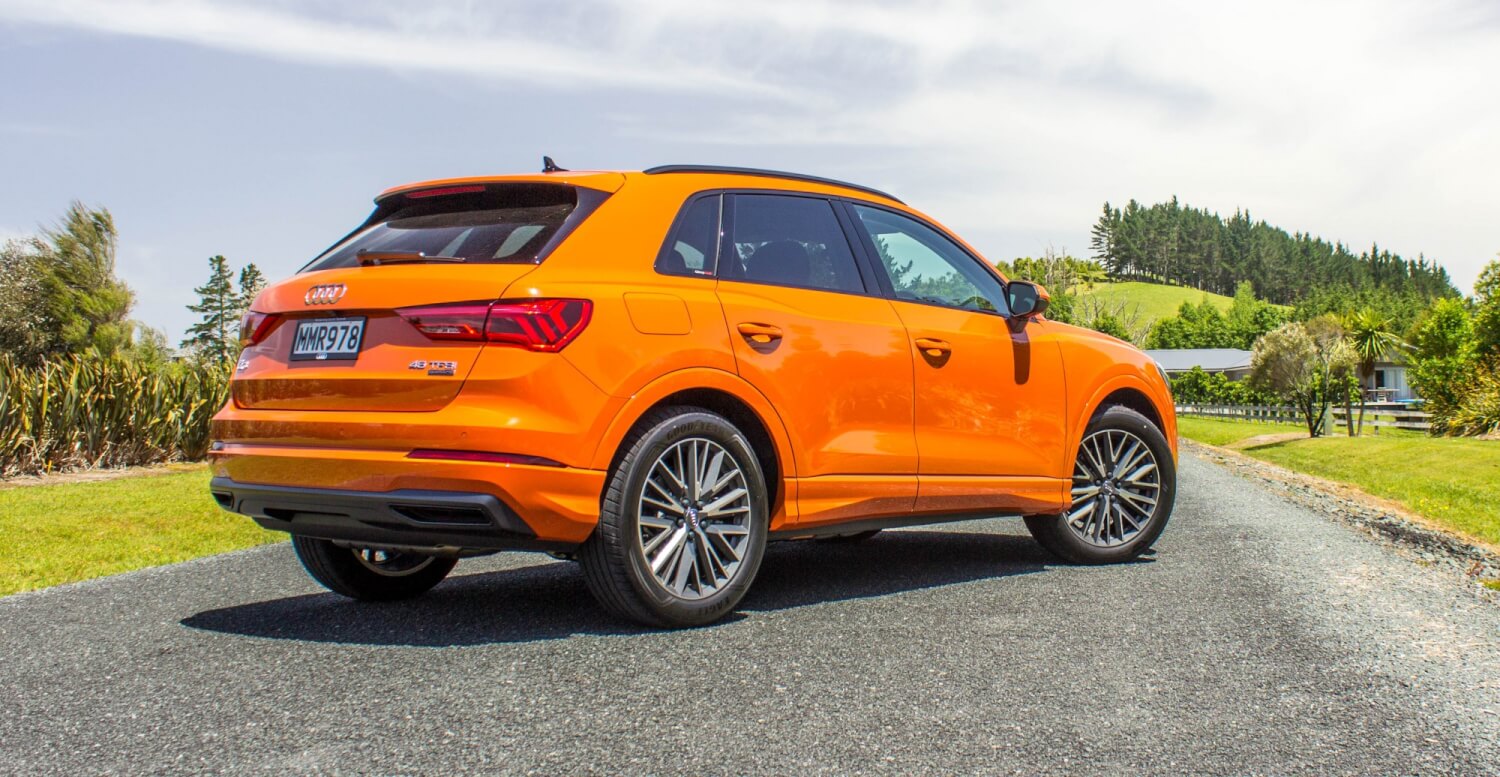
I can hear more tyre noise in this model, I assume it’s from the change of wheel to 19”, and maybe a change of tyre. It’s still not bad or loud, just noticeably more than the base model.
Time for a drive. Yes, this is the model to get if you are a Driver. Instantly, you can feel the punch of this engine, along with a slightly more baritone exhaust note. It sounds delicious at revs. Passing is effortless, and on the motorway, it’s almost silent. I don’t get to test this one on any windy roads, but I know it’s going to be better, with a motor that supplies more instant torque.
Is it worth the extra cash over the base model? We’re going to have to wait to test both of them to find out.
VERDICT
There isn’t one. It seems to be a great-driving, well-finished compact SUV, and either drivetrain would do me just fine, really.
But as always, we’ll reserve any judgement until we spend a week behind the wheel – then all will be revealed.
